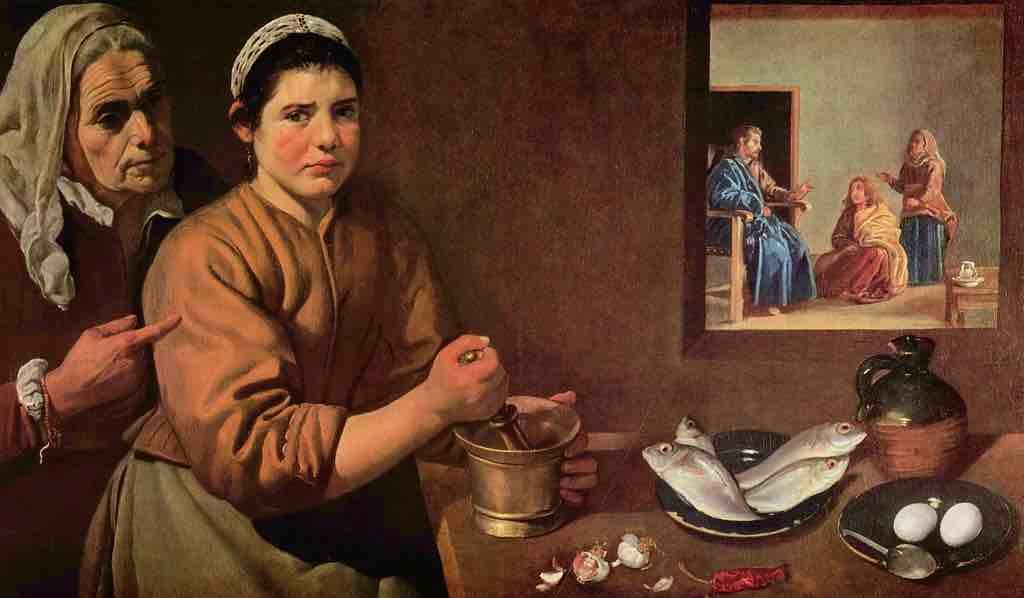Diego Rodriguez de Silva y Velazquez – or plain diego velazquez! – was the leading Spanish artist in the court of King Philip IV of Spain in the 1600s.
An artist of astonishing technique and confidence, many art critics say he is unsurpassed as a portrait artist.
His great fame came long after his death, starting in the first quarter of the nineteenth century, when he was used as a model for Realist and Impressionist artists, such as Manet.
This influence continued to later artists … for example Pablo Picasso and Salvador Dalí.
Many critics claim a sense of modernness of impression, of direct contact with nature, and a vital force pervades all of Velazquez´s work, be it landscape or portraiture.
In fact, one of the most consummate of painters – John Ruskin – stated “everything Velazquez does may be taken as absolutely right by the student”.
A realist, diego velazquez painted only what he saw. His men and women seem to breathe, his horses are full of action, and his dogs full of life.
England was the first nation to recognize his extraordinary merit and, outside Spain, owns the largest share of his works. Meanwhile, the Prado Museum in Madrid houses over 60 of his works.
diego velazquez – biography
Diego Velazquez was born in June 1599 – in Seville, Spain.
His father was Rodríguez de Silva – a lawyer from a good family, descended from Portuguese nobility. Consquently, Velazquez received a good education and training – mainly in languages and philosophy.
However, the boy was mad keen on art and eventually placed under the temperamental Herrera for tuition – a vigorous painter who chose to disregard the Italian influence in painting.
After one year under Herrera, Velazquez went on to study under the pedantic Pacheco, with whom he stayed for five years.
The young Diego not only studied art during this time! He also fell in love with the master´s daughter – Juana – whom he married in 1618.
During this period, still in Seville, the young painter was busy producing his tavern pieces (bodegoas) and fine, detailed works of peasant life.
The young couple had two daughters. Sadly, the younger died in infancy, but the elder – Francisca – survived and eventually married the painter Bautista del Mazo.
By 1622, diego velazquez was eager to see more of the world so headed for Madrid with letters of introduction to Fonesca, who held a good position at court.
Velazquez must have made a strong impression, for the following year he was summoned to return by Olivares, the all-powerful minister of Philip IV.
The following year – in 1624 – his family also moved to Madrid to be with him, and the Spanish capital became his home for the remainder of his life.
Although Philip IV of Spain was a rather weak king, he was a great art lover. For 36 years he remained a faithful and attached friend to Velazquez, declaring that no other artist should paint his portrait.
In 1628, the renowned Rubens visited Madrid on a diplomatic mission lasting 9 months and Diego Velazquez was appointed by the king to be his guide among the rich treasures of Spain.
Although Rubens did not succeed in influencing Velazquez´s style, he did fill him with the desire to experience Italy and see the works of the great Italian artists.
His first visit to Italy was in 1629, after which came what is termed as the artist´s “middle period”. During this time, King Philip was visiting the painter almost daily in his studio in the palace, resulting in some 40 portraits of the king plus portraits of other members of the Royal Family, including Isabella of Bourbon (Philip´s first wife) and her children.
Many paintings of the court buffoons and dwarfs were also done, such as El Primo (The Favorite), El Bobo de Coria, El Niño de Vallecas, and Pablillos.
Historical works included Las Lanzas (Surrender of Breda, 1647), which is perhaps the finest example of the silvery-blue style of Velazquez. Plus religious paintings like Christ On The Cross, dated 1638.
Although Spain was rich in pictures, she was poor in statuary and diego velazquez was commissioned to proceed to Italy to make some purchases.
This he did in 1649 and this was also to herald the advent of the painter´s third and last style. One example of this period is the portrait of Pope Innocent X. Although there is great ruthlessness in the portraits expression, the Pope didn´t seem to mind and was, apparently, quite pleased with it.
Another example of work from this period is the portrait of Velazquez´s servant – Pareja.
In 1651, the artist returned to Spain along accompanied by some 300 pieces of statuary. Paintings of Mariana of Austria, King Philip´s second wife followed (Isabella of Bourbon having died in 1644) and the infantas – Las Meninas.
Other works of this era include Venus and Cupid and Las Hilanderas (The Spinners) dated around 1656 and which shows the interior of the royal tapestry works.
diego velazquez – his death
In 1660, a peace treaty between France and Spain was consummated by the marriage of the Infanta Maria Theresa with Louis XIV. Velazquez was charged with the decoration of the Spanish pavilion.
After his return to Madrid, he was stricken with fever and died. Within 8 days, his wife – Juana – had joined him.
When the artist passed away, he was in full possession of his great powers and, consequently, diego velazquez left no work behind showing any trace of decay.

